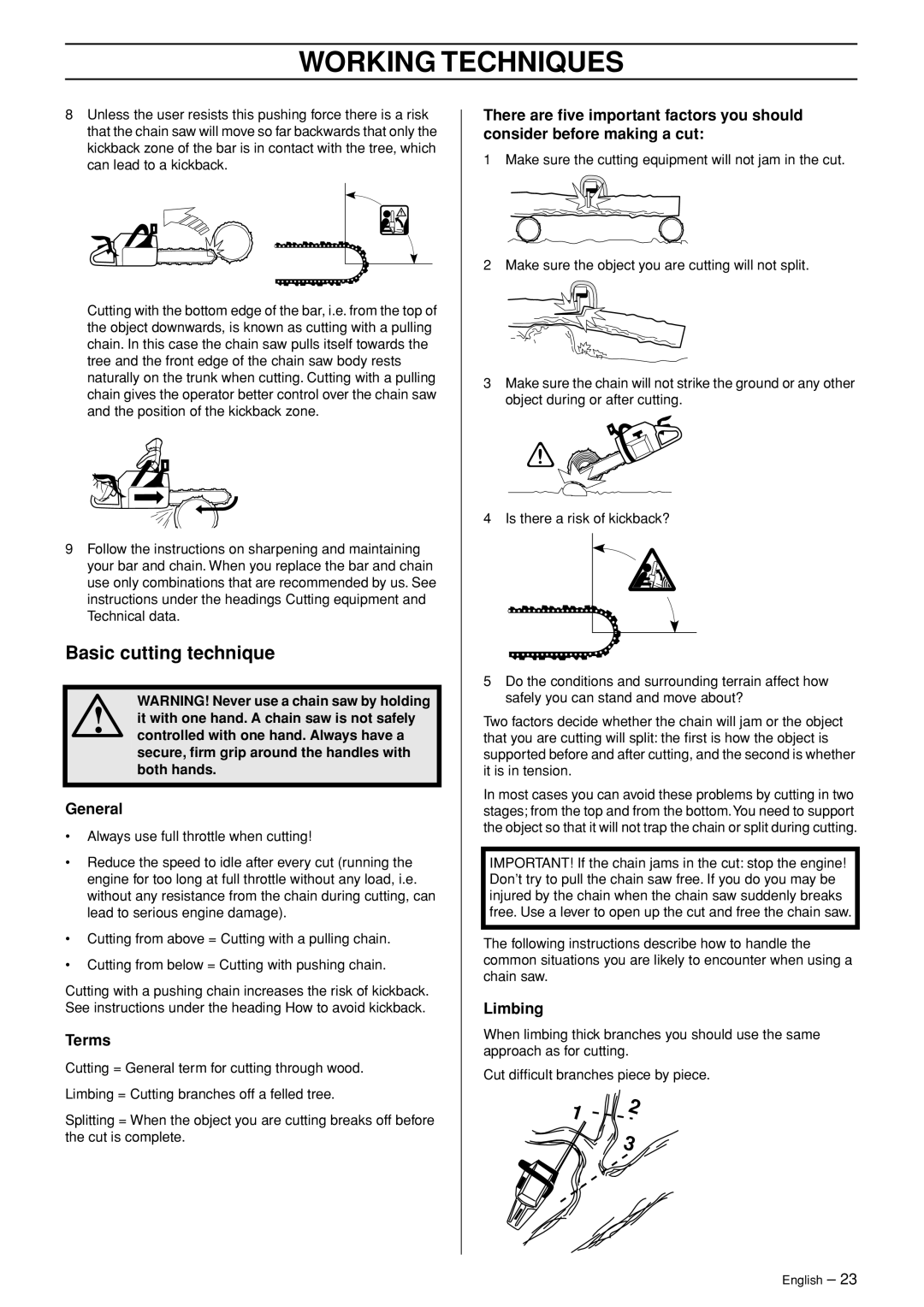345e, 345, 346XP, 353 specifications
Husqvarna is renowned for crafting high-performance chainsaws, and the models 345e, 345, 346XP, and 353 are prime examples of their engineering excellence. Each of these chainsaws is designed to cater to the needs of both professionals and enthusiasts, boasting impressive features and advanced technology.The Husqvarna 345e is a powerful yet lightweight chainsaw. It is equipped with a 50.2cc engine, delivering an impressive output of 3.0 horsepower. Its X-Torq technology reduces fuel consumption and emissions, making it an environmentally friendly option. Additionally, the chainsaw features an ergonomic design, ensuring comfort during prolonged use. The LowVib technology minimizes vibrations, reducing operator fatigue.
Next in line, the Husqvarna 345 is similar in many respects to the 345e but focuses on providing a robust and reliable performance. It also features a 50.2cc engine and utilizes X-Torq technology for optimal fuel efficiency and low emissions. One of the standout features of the 345 is its tool-less chain tensioning system, allowing for easy adjustments without the need for additional tools. This is particularly advantageous for users who require quick adjustments in the field.
The Husqvarna 346XP is a favorite among professionals, designed for heavy-duty tasks. Its X-Torq engine delivers exceptional power, while its lightweight construction enhances maneuverability. The 346XP features Air Injection technology, which reduces the amount of dust and debris that enters the air filter, prolonging the life of the chainsaw. Additionally, the chainsaw’s adjustable oil pump ensures that the chain receives the right amount of lubrication, optimizing performance and longevity.
The Husqvarna 353 is built for versatility and performance. With a 50cc engine, it provides ample power for a wide range of cutting tasks. Its innovative features include a robust crankshaft designed for higher revolutions, enhancing overall performance. The 353 also incorporates the innovative Smart Start technology, making it easier to start the engine with minimal effort. Its ergonomic design ensures comfortable operation, reducing fatigue during extended use.
In summary, the Husqvarna 345e, 345, 346XP, and 353 chainsaws are distinguished by their advanced technologies and user-friendly features. Whether for professional use or as a reliable tool for everyday tasks, these models exemplify Husqvarna’s commitment to quality, efficiency, and performance.

